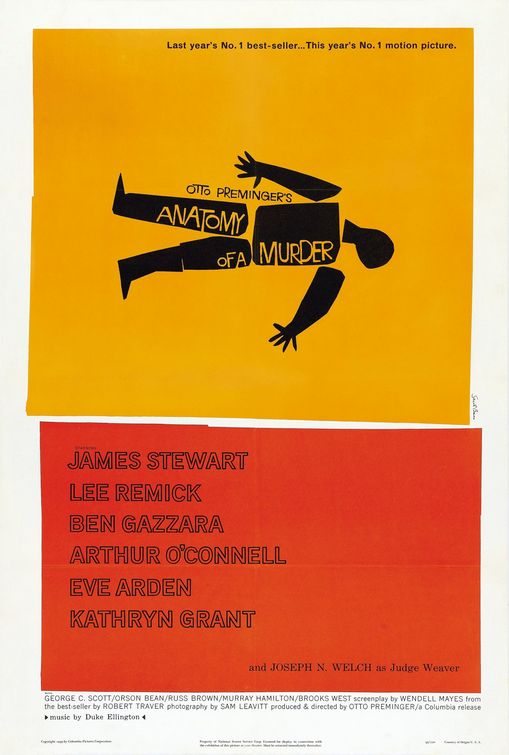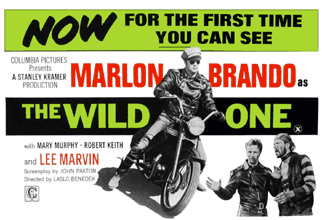Amores Perros

Alejandro González Iñárritu may be best known for his film Babel (2006) or 21 Grams (2003), but his first feature film, Amores Perros, shows his ability in weaving stories together through the commonality of human suffering. Made in his home country, Mexico, the film is set in Mexico City, featuring three stories that are connected by a single car crash. Within these stories contain intensified, passionate characters with tales of love, loss, and dogs.
In the first, Octavio becomes involved with the dog-fighting business in order to make money so he can run away with his sister-in-law Susana and begin a new life. This plan falls out of reach as tragedy pursues, and the story ends with more than the loss of dreams.
Continue ReadingLolo

This is the kind of movie that was made with various limitations that must be taken into account. I’ll lay all the flaws out on the line, and in the end you can be the judge. The lighting is horrendous, but due to the grizzly subject matter it works. I can’t imagine what kind of equipment they used, but many of the scenes are shot at night, which normally boosts a film’s budget by several degrees. The camera work, however, is awesome. I’m not sure how that’s possible, but I’d love to see how they crafted the various overhead shots and rotational pans, similar to some popular French films and 360 shots that Spike Lee used in the '90s. You could say that the darkness provides a good storytelling device for this film, seeing as how it has some very violent scenes, but there were honestly some shots where I could hardly see the characters or follow what was going on. The music is interestingly different, spanning from Mexican hard rock/punk to boleros, but it does lack proper placement and flow. The film is also fairly short and resolved with a bit of haste.
Now, if the above would not deter you from taking a look, I think you’d be as pleased with the film as I was. Instead of writing this review in a regular sense, I'd like to add a bit of analysis, which will better explain why I like it so much. Without spoiling the entire plot for you - or the ending - I'd say that if you are annoyed by religious overtones and metaphors in films, this might not be a movie you'd like. My next statement might not be as easily swallowed by some people, but certain elements in the film's plot and emotive efforts reminds me of two of my favorite movies, Pixote and Mulholland Drive. This is not a comparison, but simply an automatic mental note. It reminds me of the slum-element and young protagonist of Pixote (along with the poor production); but with Mulholland Drive, the resemblance for me is in the importance of a key object. In David Lynch's movie, it is the blue box and key that holds the fate for the lead characters and alters their past and future. In a similar sense, a golden watch and a pair of red sneakers are two simple props from which all the events in this movie can be pivoted.
Continue ReadingTesis
 A man jumps in front of a train and commits suicide, forcing everyone to exit and walk past the bloody scene in a tunnel. Among the commuters is Angela (Ana Torrent), a college senior. She witnesses the curiosity of the passengers who eagerly try to get a glimpse of the morbid scene, and she, too, wanders closer in order to get a look. She decides to write her thesis paper on audiovisual violence and its relation to the masses. The interest comes from not only the scene on the train, but the roll of violence in the media. However, being new to the concept, and yet observing it all her life, she finds many obstacles in obtaining footage that is violent and/or pornographic. In short, she comes to the conclusion that she needs access to footage that is too crude for television.
A man jumps in front of a train and commits suicide, forcing everyone to exit and walk past the bloody scene in a tunnel. Among the commuters is Angela (Ana Torrent), a college senior. She witnesses the curiosity of the passengers who eagerly try to get a glimpse of the morbid scene, and she, too, wanders closer in order to get a look. She decides to write her thesis paper on audiovisual violence and its relation to the masses. The interest comes from not only the scene on the train, but the roll of violence in the media. However, being new to the concept, and yet observing it all her life, she finds many obstacles in obtaining footage that is violent and/or pornographic. In short, she comes to the conclusion that she needs access to footage that is too crude for television.
There are two sources that she expects to be quite lucrative in her quest for information. The first is her cinema professor, who is directing her thesis and has access to the school's film archives. The second proves to be more beneficial. Chema (Fele Martinez), a fellow student in her class, is rumored to be a sadist with a personal library of the kinds of films she needs to research. When she asks to see his collection, he is cold and unresponsive, but soon agrees to help her based on her good looks. What he shows her would be the equivalent to the shock value films, Faces of Death—film compilations that feature real accounts of torture, executions, etc. She's disturbed by the films, mainly because she realizes that there are people like Chema who are target audiences, and therefore the films have a sort of industry.
The Birds

Isn't it funny that few people have not heard of The Birds, and yet fewer would vote it one of Hitchcock's best? Perhaps the reason is that more than any other Hitchcock film, The Birds leaves the viewer with the very unsettling feeling of a nightmare without end.
The basic story of a beautiful, spoiled socialite chasing after her beau to small-town (and fictitious) Bodega Bay seems insignificant to the film. Even the underlying message of the mass revolt of nature, as symbolized by birds against man, seems insignificant. In the end, it is the experience of going through the nightmarish bird attacks that will haunt us forever. Hitchcock unceremoniously throws the audience in with the unfortunate lot of the characters. We were scratched, bitten, terrorized right alongside Tippi Hedren.
Continue ReadingIt’s A Wonderful Life

Somehow I never got hip to It’s A Wonderful Life until more recent years. Though it’s been a Christmas season staple ever since the 1970s when its copyright fell into the public domain, it managed to elude me my entire childhood. I think I may have blown it off as corny or lightweight, but I couldn’t have been more wrong. It’s A Wonderful Life, besides being incredibly moving, has themes that still pack a wallop.
On first viewing it may take some nudging to get past the set up concerning stars talking and angels and what not. The Our Town piece of Americana, its lovable small town, seems overly clichéd at first glance until you realize this is the movie that invented it. There is a reason these ideas are now called "Capraesque." This and other films (Mr. Smith Goes To Washington, Meet John Doe, etc.) established director Frank Capra and his wholesome characters whose decent values can take on the world as a style all its own. And then the great Jimmy Stewart enters the picture and anchors it with an epic performance.
Continue ReadingFrenzy

Alfred Hitchcock’s second to last film, the underrated Frenzy, may not rank in his top tier. I would reserve that for The Birds, Vertigo, Notorious, and the first two-thirds of Psycho. But it definitely deserves consideration for that next tier, a still high quality group of classics that may include Rebecca, Strangers On A Train, Rear Window and North By Northwest.
Returning for the first time in decades to his old stomping grounds in England, the then seventy-three year old master was able to fully embrace the sex, violence, and nudity standards that had become looser by the early 1970s. The film is shockingly explicit even when compared with say, Marnie, his sexual thriller he made only eight years earlier.
Continue ReadingThe Red Shoes

The tale of a prima ballerina's struggle to stay on top was recently given a fresh face in terms of Darren Aronofsky's newest feature, Black Swan. Several critics made direct references to The Red Shoes because it features a very similar story: a young and beautiful ballerina gets a chance to work for a company of great prestige, ultimately being driven to insanity under the pressure. While this film is similar on a few levels, I venture to say that it does surpass Black Swan on a visual level and has held up nicely in modern tastes. I'd even like to note that the film's surrealism was paid homage to in Black Swan, especially one scene in particular, but I'll explain that in the review of the movie.
This film is perhaps one of the most erotic and sinister pieces of art that I have seen, which is a bold statement when one compares that to present-day cinema. The claim is made simply because of the way love, greed, and desire is executed throughout the story. The saturated and vivid colors remind you of a living creature, and the imagery and techniques will not soon be forgotten by any audience. Comparatively, it is also unique because it not only focuses on the tribulations of the ballerina, but of the composer who is also trying to make his mark.
Continue ReadingAnatomy of a Murder
 Director Otto Preminger seemed to look for controversial subjects all through his career but with his two hour and forty minute courtroom masterpiece Anatomy of a Murder, he might’ve gone farther than 1959 audiences could handle. The film is about a lawyer defending a man who’s accused of killing a guy who possibly raped his wife. If that wasn’t lurid enough for audiences, they especially got all angsty over a word that was repeated in the trial, that horrific word…. “panties” (you know, women’s underwear). For anyone who can get past such a lewd word, Anatomy of a Murder is very dense in detail, almost an epic in just exploring the small details of a legal case. And it’s still one of the best lawyer flicks ever.
Director Otto Preminger seemed to look for controversial subjects all through his career but with his two hour and forty minute courtroom masterpiece Anatomy of a Murder, he might’ve gone farther than 1959 audiences could handle. The film is about a lawyer defending a man who’s accused of killing a guy who possibly raped his wife. If that wasn’t lurid enough for audiences, they especially got all angsty over a word that was repeated in the trial, that horrific word…. “panties” (you know, women’s underwear). For anyone who can get past such a lewd word, Anatomy of a Murder is very dense in detail, almost an epic in just exploring the small details of a legal case. And it’s still one of the best lawyer flicks ever.
The film is loaded with talent on both sides of the camera including a famous title sequence by Saul Bass (Psycho) and a catchy score by Duke Ellington (strange since the film takes place in Michigan’s Upper Peninsula—not exactly a “jazzy” part of the country. Also, Duke appears in a cameo as well.) Michigan Supreme Court Justice John D. Voelker wrote the book based on a real life case; the script was shrewdly adapted by Wendell Mayes (The Poseidon Adventure, Death Wish). It’s also shot in cool black & white by the dependable cinematographer Sam Leavitt (A Star Is Born, Exodus, Major Dundee) and it was edited by another pro, Louis R. Loeffler (Laura, The Long Hot Summer). And of course director/producer, the Hungarian-born Preminger himself, was one of the big guns of his era, with a directing career going back to the Noir period (Laura, Whirlpool). Anatomy of a Murder was easily his best film but everything he did, no matter the overall quality, was always interesting.
Doctor Zhivago

The third film in director David Lean’s "How To Make An Epic" Trilogy, Doctor Zhivago followed The Bridge On The River Kwai and Lawrence Of Arabia. It may not carry the same critical cache today - some find it too soapy and less "important" - but it’s just as entertaining and just as impressive as his previous two epics. This period for Lean from ’57 to ’65 followed his rather dated Criterion Collection endorsed British period of the '40s and early '50s. And then his follow up to Zhivago five years later, Ryan’s Daughter, does not quite hold up today. But his follow up to that, his final film, the underrated A Passage To India in ’84, is rather interesting and showed the seventy-something director still working with all his powers, if not quite the scope.
Doctor Zhivago could be used for any class on film symbolism. It‘s constant: the leaves falling from the sunflower, the melted snow, the electricity of the cable cars, the deliberate use of the color red standing out among the drab colors. Robert Bolt’s concise script helps to spell out the character's feelings without the actors ever having to proclaim them. It all works to boil down Boris Pasternak’s epic novel of adultery before, during, and after the Russian Revolution. In terms of history class, along with Eisenstein’s Battleship Potemkin, Franklin Schaffner’s Nicholas And Alexandra, Warren Beatty’s Reds, and Woody Allen’s Love And Death, you have everything you could ever want to know about that period in Russia, or at least everything I know about it.
Continue ReadingThe Wild One
 Though that amazing string of performances in A Streetcar Named Desire, Viva Zapata!, Julius Caesar, and On the Waterfront earned Marlon Brando four straight Oscar nominations (finally winning for Waterfront) and made him the most celebrated acting talent of his generation, it’s actually his work as Johnny in The Wild One that made him an icon of rebellion and helped inspire the youth culture that was just beginning to emerge in America (and abroad). The Wild One was the first “biker picture” to penetrate mainstream consciousness, a genre that would become very popular in independent film ten lean years later.
Though that amazing string of performances in A Streetcar Named Desire, Viva Zapata!, Julius Caesar, and On the Waterfront earned Marlon Brando four straight Oscar nominations (finally winning for Waterfront) and made him the most celebrated acting talent of his generation, it’s actually his work as Johnny in The Wild One that made him an icon of rebellion and helped inspire the youth culture that was just beginning to emerge in America (and abroad). The Wild One was the first “biker picture” to penetrate mainstream consciousness, a genre that would become very popular in independent film ten lean years later.
Though produced by issue-director/producer Stanley Kramer, giving the film an overly dramatic “this is important” vibe, it’s actually a really fun B-movie, carried by Brando’s cocky performance. His Johnny leads his biker gang almost like a cult leader. The gang, with their rowdy antics, tries to impress their messiah, but Johnny, with his southern/ be-bop accent, is a man of few words. Hitting the road looking for kicks, Brando and his gang stumble on a small town where they instantly catch the attention of the law and some uptight citizens, and a saloon owner invites them to stay for beer and sandwiches. The innocent young barmaid Kathie (the very beautiful Mary Murphy) catches Johnny’s eye. It doesn’t help when he declares “I don’t like cops,” even though her dad is the town’s sheriff (Robert Keith, father of Brian), and is actually very evenhanded and sympathetic to Johnny and his pals.





